SupremePunk #065
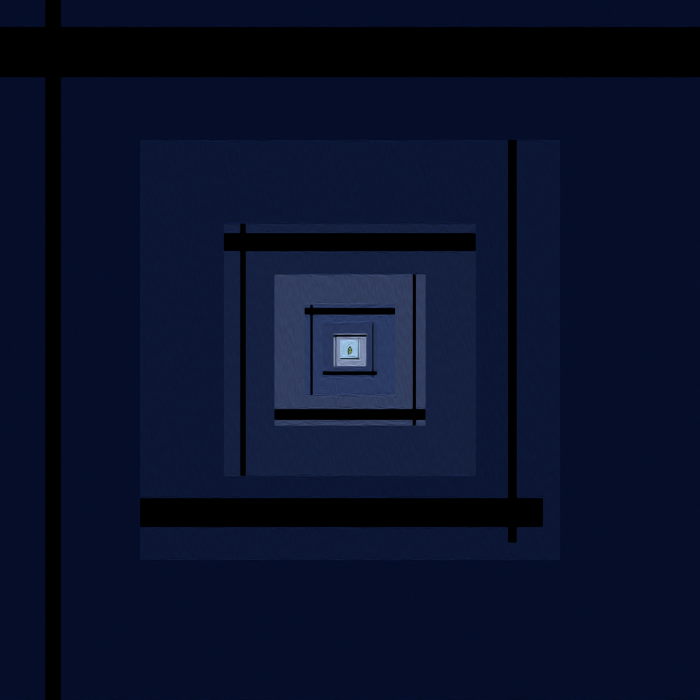
Homage to the CryptoPunk
This Punk is inspired by CryptoPunk #8472 and the work of Josef Albers. Josef Albers was a legendary teacher and color theorist. The artist is best known for his iconic “Homage to the Square” series (1949–76), which presents nested squares of varying colors and explores how different combinations of shape and hue affect viewers' perception and emotions.
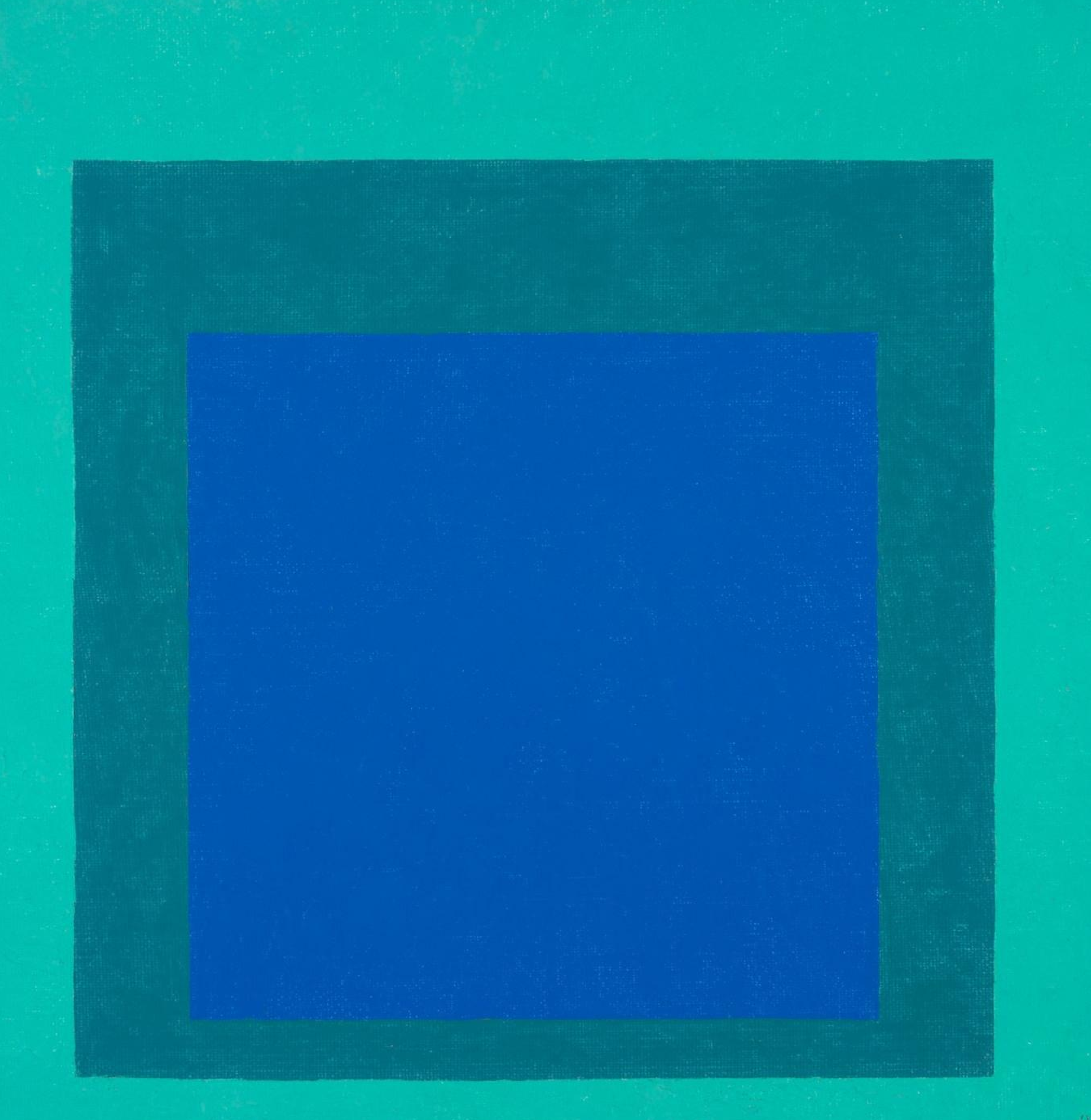
J. Albers — Homage to the Square series, 1949–76
Alberts showed that color affects our emotions whether we see it in person or on canvas. Colors form complex systems on which, in particular, the language of art is based: we all have an innate sense of color, which can be both conscious and unconscious. By the end of the twentieth century, his images were increasingly seen as the nearest German-American analogue of K. S. Malevich's Suprematism.
In this cycle, the main modules are squares, as if "nested" one in another and composing a variety of chromatic "fugues".
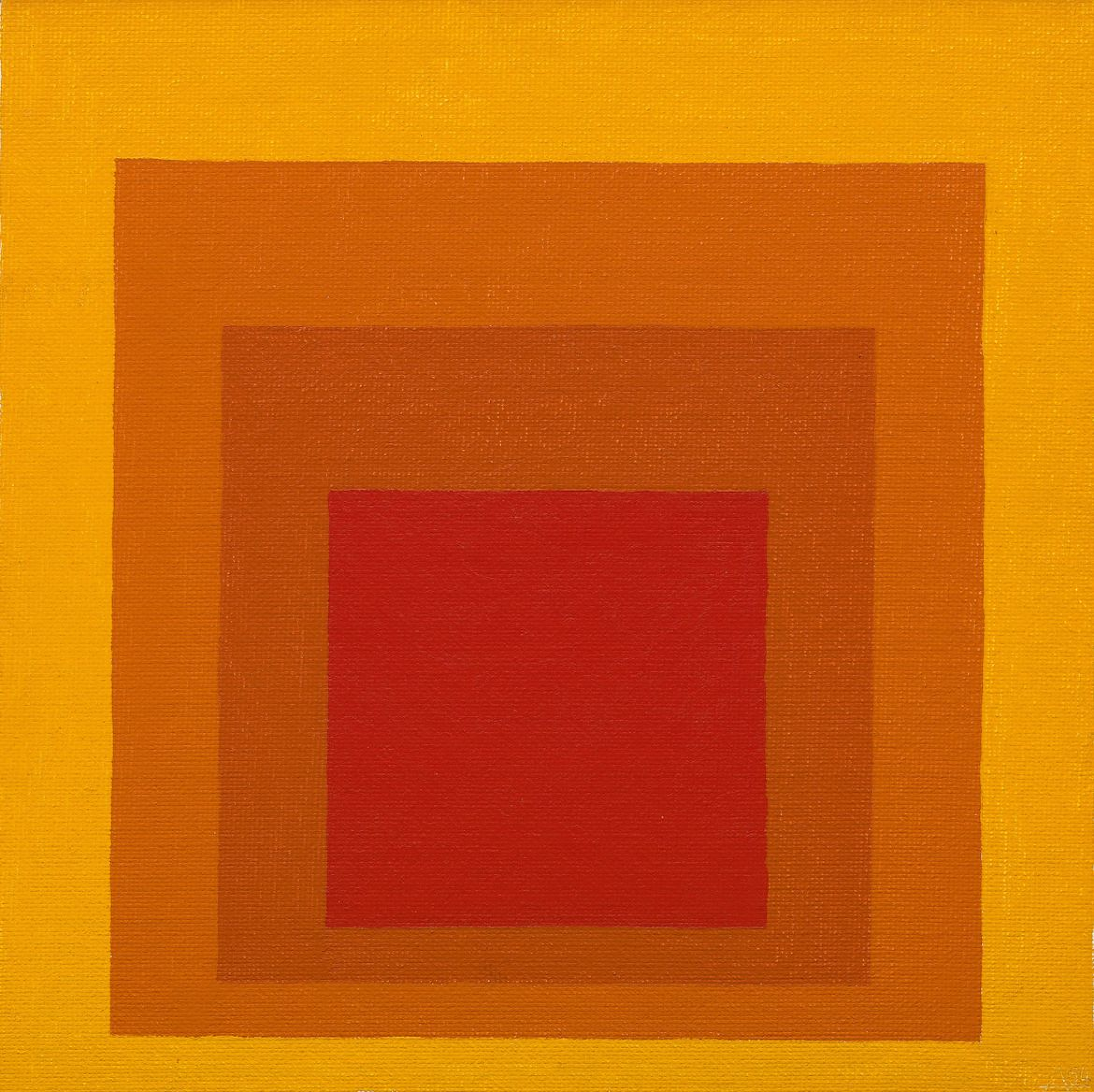
J. Albers — Homage to the Square series, 1949–76
Despite the perfect geometry, Joseph Albers' “Homage to the Square” series extols "humanistic values” . Most of the paintings in the new series show the same composition of 4 squares in a square, extending far beyond the middle of the canvas and away from its borders. In most of the works, Albers made the most distant square lighter than the squares around it, as having opened up an illuminated space. On closer inspection, they reveal a dense mixture of small strokes of paint.
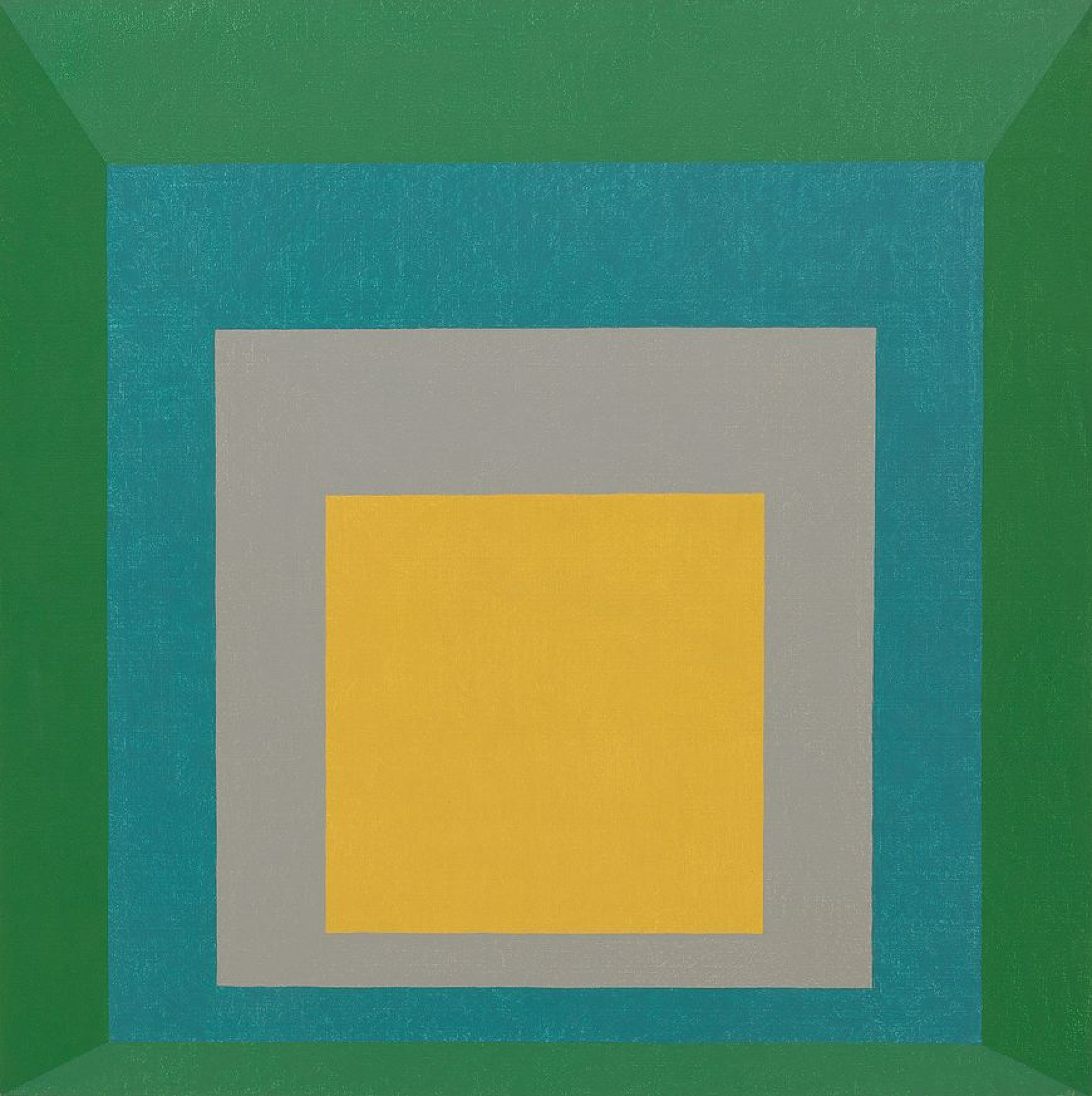
J. Albers — Homage to the Square series, 1949–76
Color is almost never seen as it really is and color deceives continually
Josef Albers - German-born artist and educator, abstract painter and a theorist.
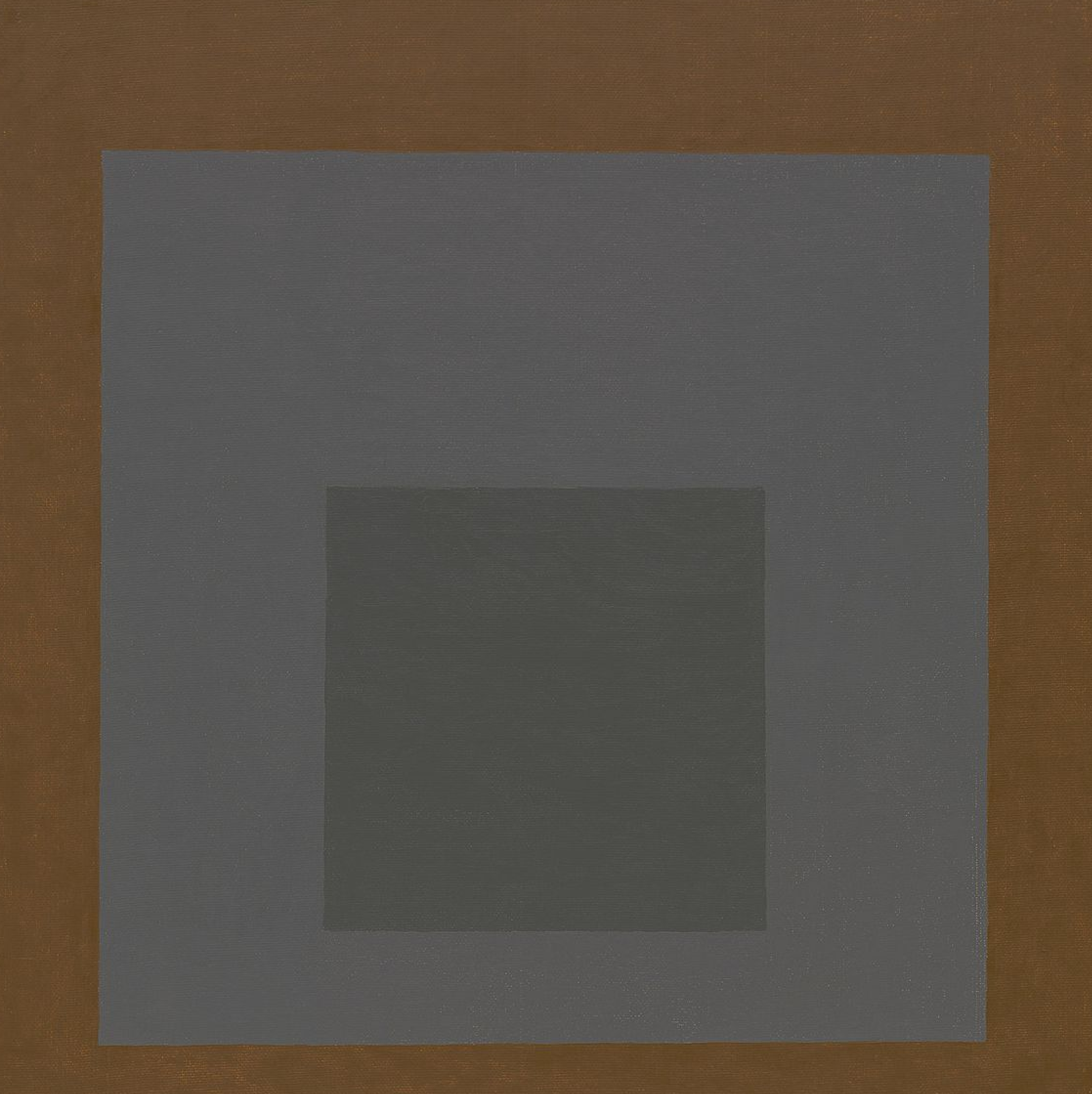
J. Albers — Homage to the Square series, 1949–76
Shades of blue and diminishing black lines create the effect of distance, and the endless recursive superstructure of the painting gives the effect of illusion, doubt, and mystery. The question that arises when viewing this painting is: Is Cryptopunk exalted and upstairs or buried in this tomb? That is the mystery of this SupremePunk - an illusion is created. By contrast and color it seems that the CryptoPunk is on top of the pyramid, but on the other hand the CryptoPunk is so crudely inserted and has no additional attributes in this picture - it is unaltered, as if we buried it underground, because when buried underground no one cares about the external component of the buried. The black structure on which the Punk is held resembles a grid, but it is not clear who is behind the grid: the viewer or the CryptoPunk?

CryptoPunk #8472
To understand the intention of the painting it is necessary to look at CryptoPunk from two angles: cryptopunk is towering and at the top, it is unreachable. CryptoPunk has changed everything - the art world will never be the same. But on the other hand - СryptoPunk has changed everything and now it doesn't fit into the framework of traditional art - it's buried deep underground. Not only has the format of the image changed, but also the attitude towards art itself. But the picture won't be in the ground until there is a new concept, a new revolution in art. Can CryptoPunk be moved at any time without losing its value? If so, it is a work of art.
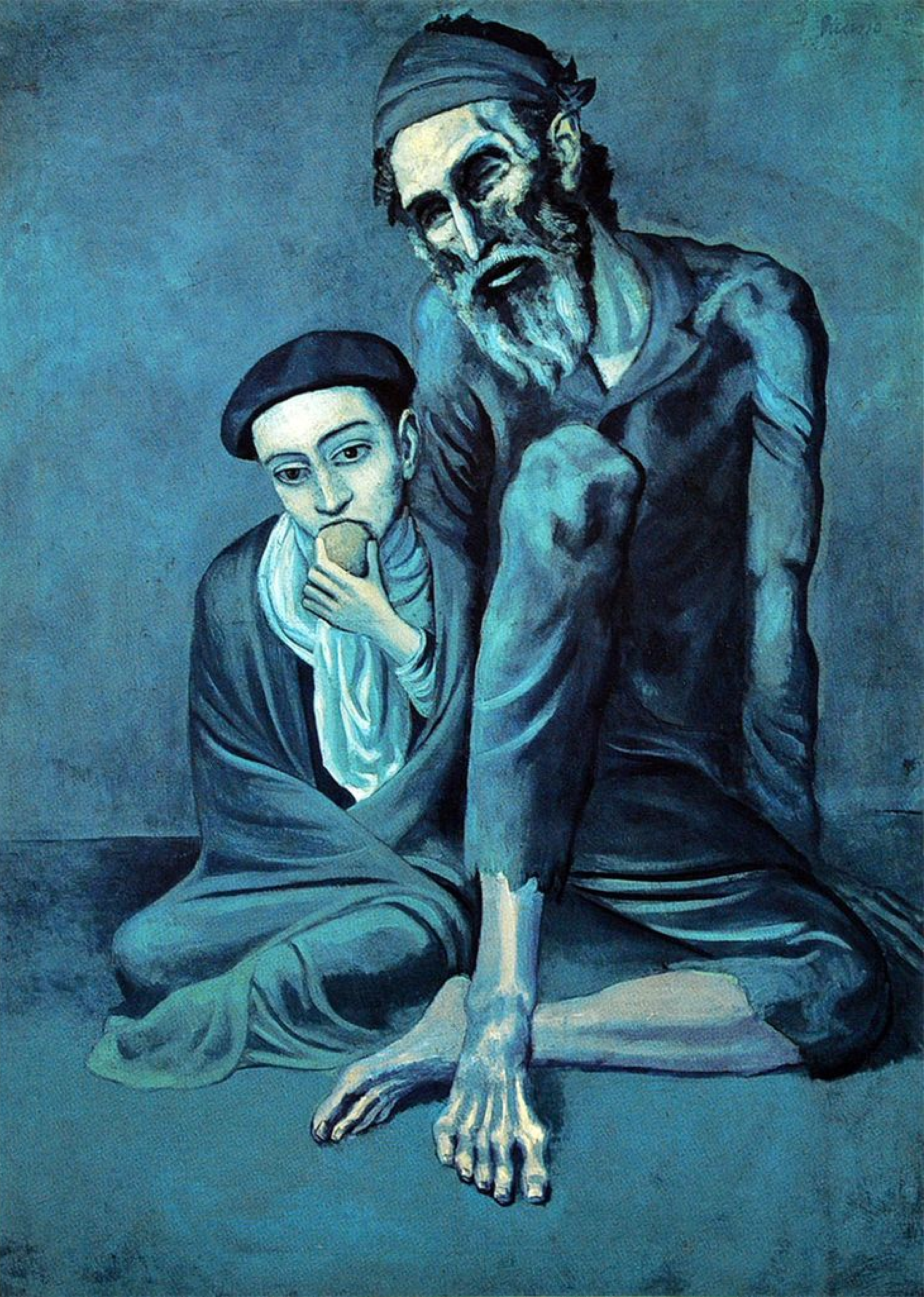
P. Picasso — Old blind man with boy, 1903 (Picasso's Blue Period)
Blue is the main color of the spectrum, it's a color that can't be ignored. One of the greatest suprematists V. Kandinsky wrote that, exactly, the participation of blue determines the cold hue. Moreover, he noted that visually blue moves away from the viewer because the internal dynamics of blue is directed inward, from the edges to the center of the circle. The wavelengths coming from blue are shorter, and it does appear more distant and calm. Blue and its shades show how deep and far Punk is from us, how untouchable it is. The shades of blue change from lighter to duller in sequence, but the consistency is limited, which emphasizes the cyclical and mysterious nature of the painting and its main attribute - CryptoPunk. In the early 20th century, many artists recognized the emotional power of blue and made it the centerpiece of paintings. During the Blue Period (1901-1904), Pablo Picasso used blues and greens, with barely warm colors, to create a melancholic mood.

Buy

Gallery:
CryptoPunk #08472 that has been taken as a base

Your transaction is in progress

You have connected to the wrong network

Transaction is successful!


